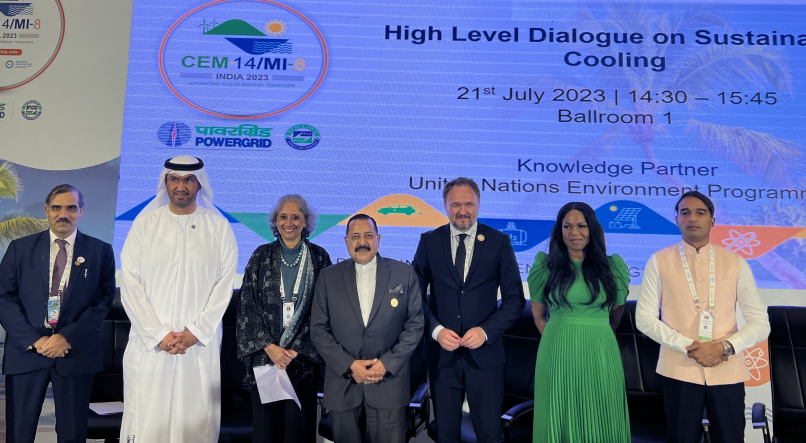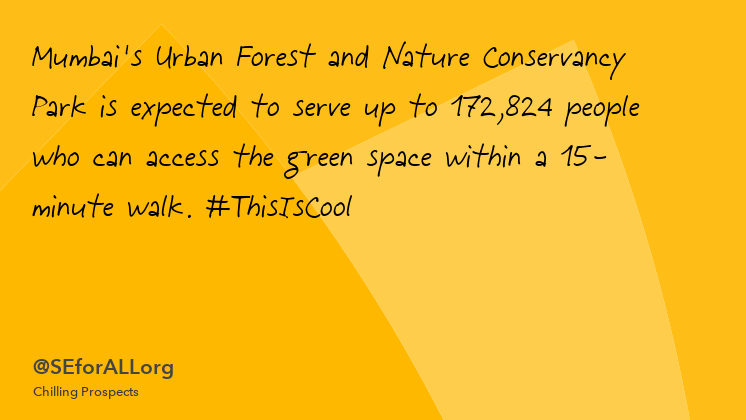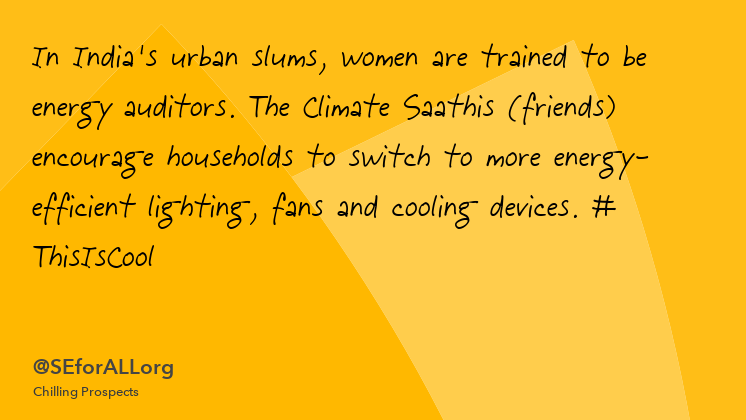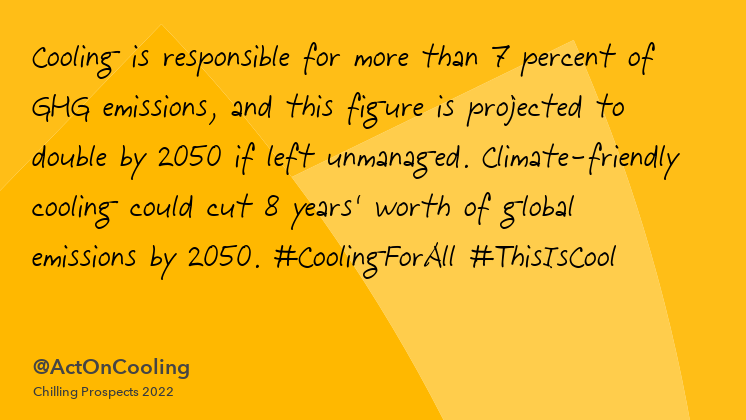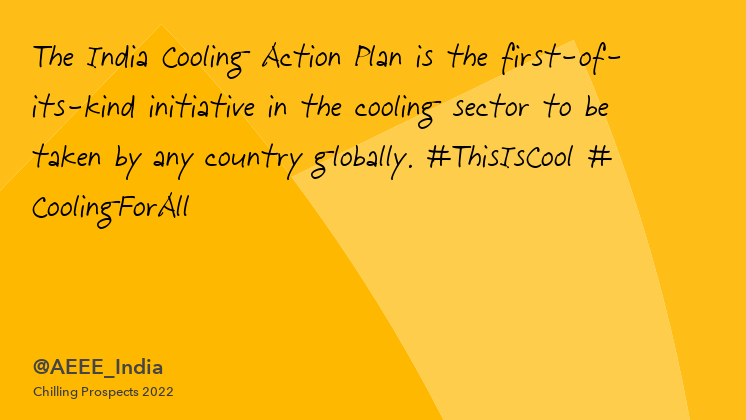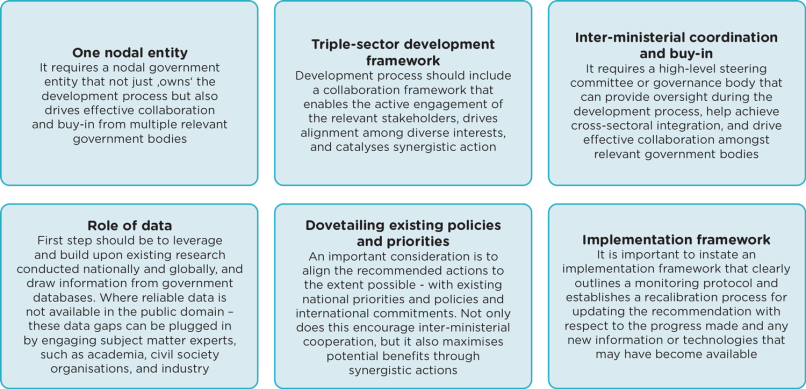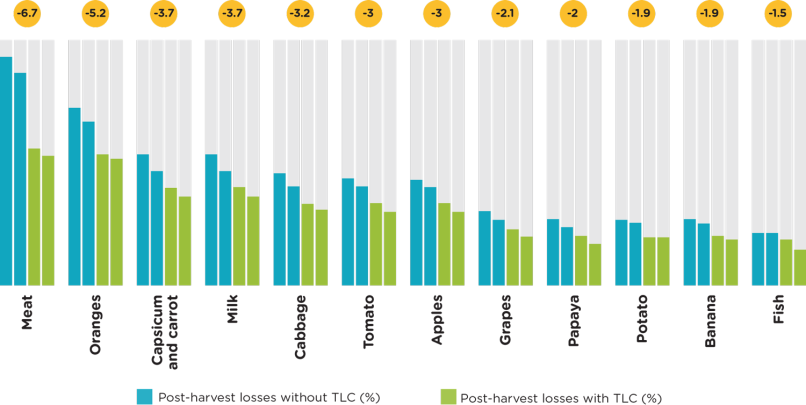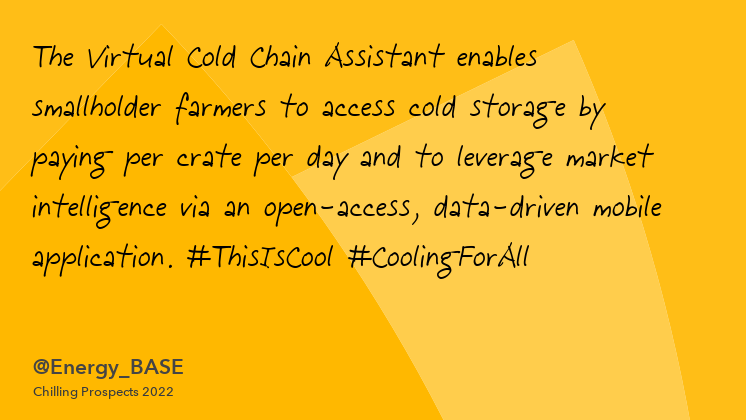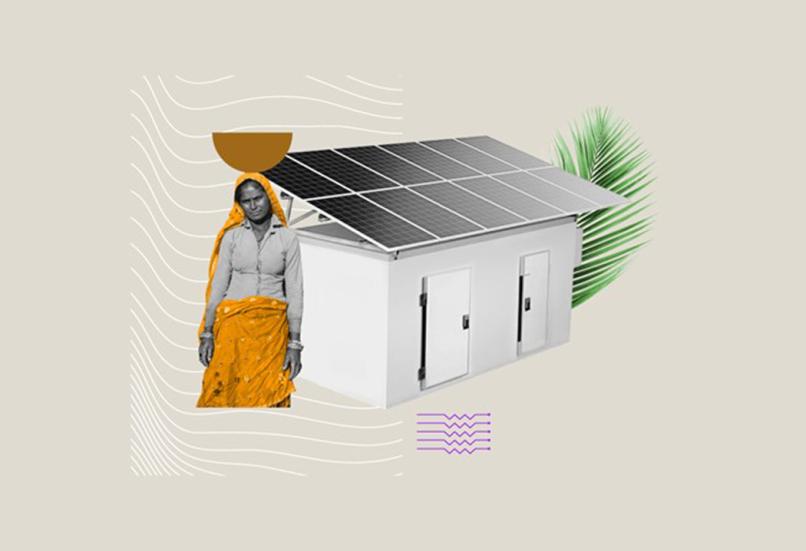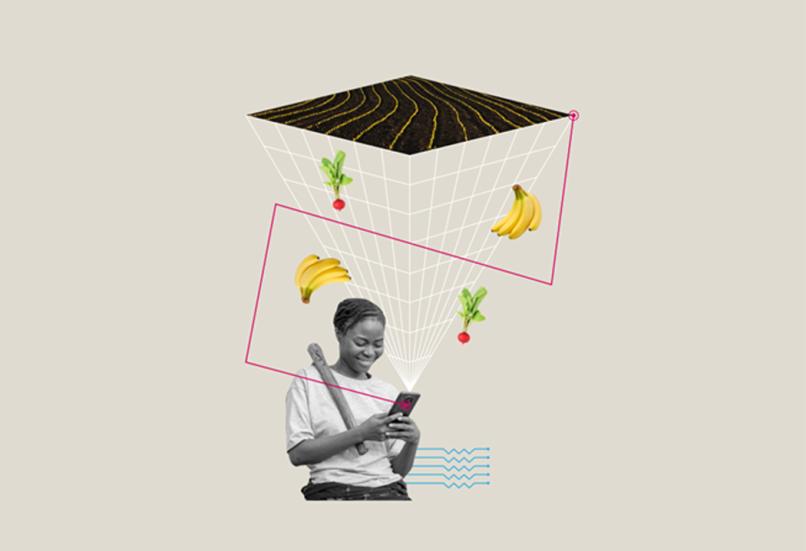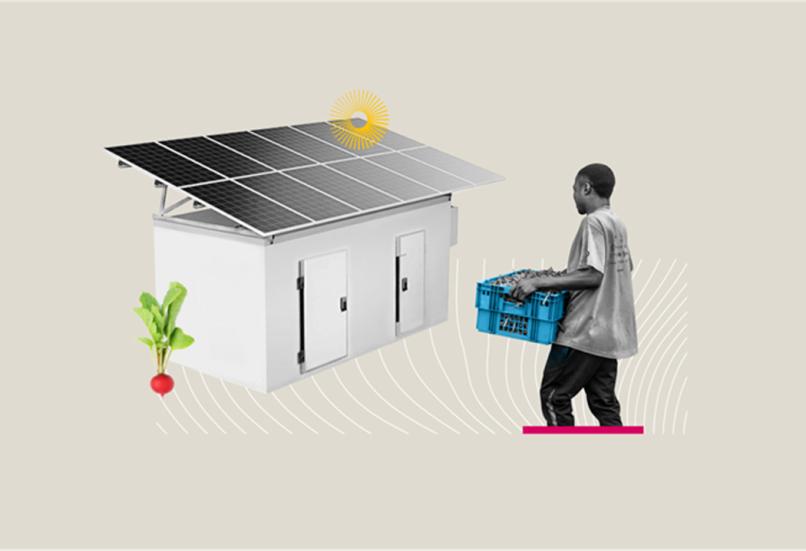Doubling Down on Efficiency and Ramping up Renewables: How Demand-Side Management Can Power Up India's Energy Goals
India has set an ambitious goal: reaching 500 gigawatts (GW) of renewable energy capacity by 2030. Demand-side management and demand flexibility will play a crucial role in achieving this goal, while also contributing to doubling its energy efficiency by 2030.
Recognizing the critical role of demand flexibility, India’s Government and electricity distribution companies (DISCOMs) are taking a proactive approach, actively developing programmes and collaborating to support the country’s renewable energy targets.
This forward-thinking approach builds on existing research that establishes the potential of demand flexibility and creates a clear business model for DISCOMs, paving the way for a more sustainable and secure energy future powered by clean, renewable sources.
Leading the Charge
On 14 May 2024, Sustainable Energy for All and Mission Efficiency hosted over 50 energy experts in New Delhi, to assess progress and review challenges and opportunities for demand management to support India’s renewable energy and energy efficiency targets.
These were the key takeaways from this session:
- India's Government and power utilities have shown promising results with national-scale programmes and pilot projects. Now, the focus is on rapidly scaling up utility-led, regulator-approved programmes.
- Effective implementation requires concerted efforts in regulation, data collection and research, and technology roll-out, driven by policy frameworks.
- There is an opportunity for information sharing and continuous learning to address challenges, supported by India’s wide ecosystem of partners and industry experts.
- Demand flexibility benefits both consumers and utilities, but enhanced awareness is required to increase participation and optimize gains.
- There are successful examples that can be replicated easily in sectors such as water pumping, agriculture, residential energy use, and behavioral change. For example, India's residential sector holds massive demand flexibility potential, sometimes even surpassing commercial and industrial sectors.
- Private players are keen on tapping into India's demand flexibility market, and many already possess technological capabilities, expertise, and a willingness to invest.
- Innovative business models and robust monitoring systems are two of the main keys to unlock full market potential.
For more information, please contact info@missionefficiency.org
Report Launch | A Spoonful of Solar to Help the Medicine Go Down: Exploring Synergies Between Healthcare and Energy
WRI India is launching its report on A Spoonful of Solar to Help the Medicine Go Down: Exploring synergies between health care and energy on 26 October, followed by panel discussions and stakeholder consultation.
A joint global report between World Health Organization and partners estimates that, globally, nearly 1 billion people access health facilities that function without electricity or with unreliable electricity. In India alone, several thousands of rural public health facilities operate without an electricity connection.
COP28 President-Designate, Ministers, SEforALL and UNEP call for action on sustainable cooling at Clean Energy Ministerial
The Government of India, as G20 President, and the Government of the United Arab Emirates, which holds the COP28 Presidency, put cooling firmly on the international energy agenda today at the High-Level Dialogue on Sustainable Cooling, which was part of the Clean Energy Ministerial-Mission Innovation Summit in Goa, India.
At a time when unprecedented heatwaves are gripping many regions of the world, today’s event highlighted how urgent action is needed to deliver sustainable cooling solutions that will protect people without hastening climate change. Several ministers and high-level representatives rallied behind the Global Cooling Pledge, its calls to action on sustainable cooling, and the steps the global community must take to achieve a “Cool COP28”, specifically one that sparks commitments towards improving sustainable cooling access.
The Global Cooling Pledge is an initiative led by the COP28 Presidency and supported by the Cool Coalition and its partners, including SEforALL. As highlighted by Ms. Ligia Noronha, UN Assistant Secretary-General and Head of the New York Office of UN Environment Programme (UNEP), “the Pledge offers state and non-state actors a unique chance to enhance commitments to climate mitigation, to adaptation, resilience and investments towards sustainable cooling.”
Previewed earlier this year, it calls for progress on nature-based solutions, super-efficient appliances, food and vaccine cold chains, district cooling, and National Cooling Action Plans, among others.
During the event in Goa, Dr. Sultan al Jaber, COP28 President-Designate and the UAE’s Special Envoy for Climate Change, said, “We have a unique opportunity to deliver a significant collective response to the cooling challenge via this very important initiative – the Global Cooling Pledge. This Pledge aims to improve efficiency and increase access to sustainable cooling. It is gaining momentum, with more than 20 early supporters, including India and Denmark.”
The COP 28 President-Designate was joined by Ministers and international energy sector leaders to call on governments to join the Global Cooling Pledge in the lead up to COP 28.
Speaking on behalf of the Government of Denmark, Dan Jørgensen, Minister for Development Cooperation and Global Climate Policy, declared, “It is clear that achieving universal access to sustainable cooling requires international corporation, dedicated climate finance, and leadership from key players.” He then urged decision-makers from government, private sector and civil society to raise awareness and advocate for a global approach to sustainable cooling.
Recent record-breaking temperatures, including some exceeding 50 degrees Celsius, accentuate the need for progress on sustainable cooling for all. New data from the Chilling Prospects research series show progress is not moving quickly enough to beat the heat. Around 1.12 billion people are still at high risk due to a lack of access to cooling, a decrease of just over 20 million compared to last year. The most acute and dangerous cooling access gaps are in the poor rural areas of Sub-Saharan Africa and in the growing cities in high-temperature regions of the Global South.
In these areas, people face risks to their health, safety and productivity because they can’t access the cooling they need. Bringing them cooling solutions is therefore a critical development and climate issue, because rising demand for cooling needs to be met sustainably. Currently, conventional cooling, such as air conditioning, is already responsible for over seven per cent of global greenhouse gas emissions. These emissions are on a path to doubling by 2050 without stronger action.
SEforALL is pleased to work with the Governments of India and the UAE, as well as the Cool Coalition to advance action on sustainable cooling in the run-up to COP28 and beyond. Together, we will be working to generate:
- Pro-poor, pro-rural innovation to put sustainable solutions in reach.
- More effective financing for the productive use of energy for cooling, building on the result-based financing that works for electrification.
- Strong policy commitments from national governments on codes, standards and integrated electrification planning that includes cooling.
- Financing for data, technical support, and project implementation that can turn a commitment into results for those at highest risk due to a lack of access to cooling
During the High-Level Dialogue, Damilola Ogunbiyi, CEO and Special Representative of the UN Secretary-General for Sustainable Energy for All, and Co-Chair of UN-Energy, highlighted how SEforALL is already supporting the Governments of Kenya and Ghana to mobilize investment in sustainable cooling solutions for the most vulnerable. We have also launched our second #ThisisCool youth innovation challenge, with winners to be profiled at COP 28.
In Malawi, SEforALL ensured that the cooling, energy, and associated investments needs to guarantee vaccine cold chains for the COVID-19 response were included in the Government’s Integrated Energy Plan. And in Madagascar, we are going a step further by including vaccine and agricultural cold chains in the support provided to the Government of Madagascar to develop their Integrated Energy Plan.
“Over the next few months, SEforALL is looking forward to working with you all on the success of the Global Cooling Pledge, and subsequently support countries to implement the solutions after the Pledge,” Ogunbiyi expressed at the event in Goa.
The effects of a warming planet, insufficient action on climate change adaptation, and the growing impacts of extreme heat on human lives underline the urgency of the issue. With 2023 representing a year of opportunity for new commitments to sustainable cooling, let us use the moment to prioritize the opportunity of Cooling for All for equality of opportunity, productivity, and health of the most vulnerable.
Chilling Prospects: Nature-based solutions to reduce the urban heat island effect in Mumbai, India
India is home to 309.2 million people at high risk due to a lack of access to cooling. Mumbai, the most heavily populated city in the country, has undergone rapid urbanization, converting natural land cover with soil, water and vegetation into urban paved areas. Consequently, it has developed a pronounced urban heat island effect (UHIE).
Measured land surface temperatures in Mumbai demonstrate that areas with low built-up density experience temperatures around 28°C, whereas high built-up urban areas exhibit significantly higher temperatures of approximately 34°C. In contrast, on the city's outskirts, where vegetation density and water coverage are more abundant, temperatures range from 21°C to 23°C. [1] Discover more urban land use and heat analysis for Mumbai here and in the WRI Working Paper Urban Blue-Green Conundrum: A 10-City Study on the Impacts of Urbanization on Natural Infrastructure in India.
The impact of Mumbai’s UHIE was particularly noticeable in the suburb of Andheri East, specifically at the Marol Co-op Industrial Estate, following the construction of a metro line. Before the metro’s construction in 2005 and 2010, average temperatures recorded were 29.27°C and 33.4°C, respectively. However, after the construction, the average temperature rose to 38.8°C. [2]
In response to this, the Brihanmumbai Municipal Corporation (BMC) and Marol Co-op Industrial Estate initiated the development of a 3.2 acre Urban Forest and Nature Conservancy Park in Marol along the Mithi river to increase green cover in this heat-stressed part of Mumbai. On World Environment Day in June 2023, the BMC carried out a tree plantation drive supporting this initiative. [3]
Chilling Prospects: The impact of Climate Saathis in India’s urban slums
The Chilling Prospects 2023 analysis shows that in India, over 215 million people in urban settings are currently estimated to be at high risk due to a lack of access to cooling services, including over 121 million women living in poor urban areas and urban slums. The Mahila Housing Trust (MHT) is empowering women to build climate resilience in slums by becoming Climate Saathis (friends in Hindi). The model builds upon the notion that if the urban poor are provided with the necessary knowledge, tools and leadership skills, they will be able to devise and implement climate-resilient technologies solutions locally.
Through the Climate Saathis project, women are trained to be energy auditors who encourage households to switch to more energy-efficient lighting, fans and cooling devices and become grassroots-level micro-entrepreneurs, forming a women-led distribution network of efficient and off-grid products. The programme also focuses on educating participants about various aspects of energy, including understanding electricity bills, calculating energy consumption, and identifying sources of energy wastage. Women also encourage households to use building materials and technologies that reduce heat. Passive cooling solutions such as white roofs and improved roofs can reduce home temperatures by up to 6°C.
Chilling Prospects 2022: The role of National Cooling Action Plans in delivering the global environment agenda
|
Reflections on five years of the Kigali Amendment by the Cool Coalition |
Increasing temperatures, growing economies, and more frequent heat waves and extreme weather events across the globe are resulting in a growing demand for cooling services.
In recent years, the issue of promoting sustainable and affordable access to cooling has emerged as an area of focus for governments, the health and food industry, real estate and technology providers, and financial institutions. Cooling services are essential to provide human comfort and productivity and ensure the safety of foods, medicine and vaccines, but can have negative environmental and economic impacts. Cooling is currently responsible for more than 7 percent of GHG emissions, and this figure is projected to double by 2050 if left unmanaged. Given the adverse impact of cooling on greenhouse gas (GHG) emissions and climate change, accelerated global efforts on policy, technology and finance availability for sustainable cooling have now become inevitable. Climate-friendly cooling could cut 8 years’ worth of global emissions by 2050.
Chilling Prospects 2022: Lessons learned from developing the India Cooling Action Plan
|
Reflections on five years of the Kigali Amendment by the Alliance for an Energy Efficient Economy (AEEE) |
Climate change-induced warming trends, population growth and rapid urbanization are driving an unprecedented increase in the global demand for cooling across sectors, including thermal comfort in buildings, food supply chains, storage and transfer of medical products, transport of people, and industrial processes. This growth in cooling is linked with the socioeconomic progress of countries as they work to achieve the Sustainable Development Goals (SDGs). India currently has low access to cooling, but its economic progress, coupled with global warming trends, will drive an eight-times increase in the demand for cooling in the next two decades. While India’s projected cooling growth is in step with its development needs, this growth, under a business-as-usual scenario, will strain existing power systems and have an adverse impact on the environment.
Chilling Prospects 2022: Integration of inland waterways in the cold chain in West Bengal
|
Reflections on five years of the Kigali Amendment by the World Bank Group |
West Bengal produces a lot of fruits, vegetables and fish, and has well-connected networks of highways and railways. However, transport accounts for 2.6 million tonnes of greenhouse gas (GHG) emissions in the state. In addition, inefficiencies and a lack of transport connectivity adversely affect the state’s economy, increase congestion and contribute to post-harvest losses of temperature-sensitive goods. Waterways have the potential to support a multi-modal cold chain transportation network with reduced emissions, environmental impact, fuel usage and costs.
Potential of inland waterways
| Environmental impact | 7 times less than roadways |
| Carbon friendly mode of transport | For every tonne-km transported on water, the GHG emission is estimated to be 50% of that by road |
| Most fuel-efficient mode of transport | 105 tonne-km by with 1-litre fuel |
| Low maintenance cost | 20% that of road |
| Low capital cost | 5-10% to that of a 4-lane highway/railway |
|
Source: World Bank Group |
Improving the inland waterways infrastructure
To address this, the Government of India, the Government of West Bengal and the World Bank signed a USD 105 million project to improve inland waterway (IW) infrastructure and spatial planning in Kolkata in January 2021. To complement this lending project, the World Bank with funding from the UK’s Department for Environment, Food and Rural Affairs (DEFRA) contracted KPMG India and the International Institute of Refrigeration (IIR) to undertake a pilot study on IW integration in the West Bengal Cold Chain to reduce congestion, GHG emissions and hydrofluorocarbon (HFC) refrigerant usage.
The initial baseline assessment of the project reviewed the demand and emissions of temperature-sensitive goods such as fruits, vegetables and fish in West Bengal across the post-harvest, primary-transport, cold-storage and distribution segments of the cold chain. The study, conducted by KPMG India and IRR under the World Bank, found that in 2020, the total Temperature Controlled Logistics (TCL) demand was 6.28 million tonnes, accounting for 1.98 million MWh of energy consumption and over 620,000 tonnes of CO2 emissions annually.
A key driver of the demand arises from the production and transportation of temperature-sensitive goods. About 65-70 percent of freight in India is transported by road and the transportation of fruits and vegetables to and from Kolkata wholesale markets and mandis primarily takes place in non-refrigerated trucks. This results in food spoiling, reduced shelf life and post-harvest losses to the tune of 10-15 percent. The global footprint of food loss and waste excluding emissions from land-use change is 3.3 gigatonnes of GHG, corresponding to about 7 percent of total GHG emissions. There is a need for a new cold chain infrastructure for most products.
An efficient, well connected cold chain in West Bengal has the potential to significantly reduce post-harvest losses
The Government of India has shown a keen interest in IWs as a means of diversifying and improving the transport modal mix, which could also reduce post-harvest losses while reducing the negative environmental impact and cost of meeting the cold chain demand. IW transport has an environmental impact which is seven times less than roadways, and for every tonne-Km transported on water, the GHG emission is estimated to be 50 percent of that by road. Additionally, IW is a fuel-efficient mode of transport (105 tonne/km with one litre of fuel), has a lower capital cost (about 5–10 percent of that of a four-lane highway/ railway), and maintenance costs 20 percent lower than roads. In order to understand the feasibility of transporting temperature-sensitive goods on waterways, the study looked at the potential impact of diverting traffic to IW.
Integrating inland waterways with RoRo cargo services
In 2026, there is the potential to divert around 30,556 tonnes of traffic to IW while around 233,409 tonnes could potentially be diverted via roll-on roll-off (RoRo) cargo service. In 2035, around 210,419 tonnes could be diverted to IW and around 1,084,346 tonnes could be diverted to RoRo. With the integration of IW and RoRo services, there is the potential for GHG emissions savings of around 10 percent and 27 percent in 2026 and 2035, respectively. In addition, with the adoption of newer technologies, fisheries could save up to 77 percent of their energy consumption by 2030 and fruits and vegetables could save up to 77 percent. Cold storage for potatoes could save up to 75 percent by shifting to improved technologies. The fruit and vegetable value chain could save about 38 percent in post-harvest refrigeration but could save up to 77 percent in transportation. The dairy value chain could save 83 percent of its energy demand by the end of 2030.
Chilling Prospects 2022: Using data science and innovative business models to strengthen agricultural cold chains in India and Nigeria
|
Reflections on five years of the Kigali Amendment by the Basel Agency for Sustainable Energy (BASE) |
With a warming planet, growing population and developing economies, the global demand for cooling is set to triple by 2050. To address the rising demand for energy and curb the release of toxic gases into the atmosphere, in 2018 the Basel Agency for Sustainable Energy (BASE) launched the Cooling as a Service (CaaS) initiative, which significantly accelerated the uptake of clean, energy-efficient cooling technologies around the world in a way that targets sustainable business growth and mitigates the impact of cooling on the climate.
The initiative established an alliance, which today has more than 70 companies on board, and its business model has been implemented in a variety of sectors and buildings, spanning education to healthcare, industry to commerce. The model is based on the servitization strategy, through which customers purchase cooling, rather than having to invest in and operate the infrastructure needed for cooling. By removing the hurdles of high upfront investment and operation and by aligning incentives towards efficiency, the model powerfully tackles the need for cooling and addresses its impact on climate change.
